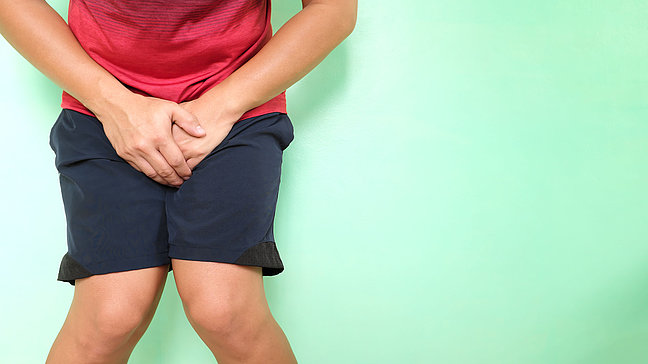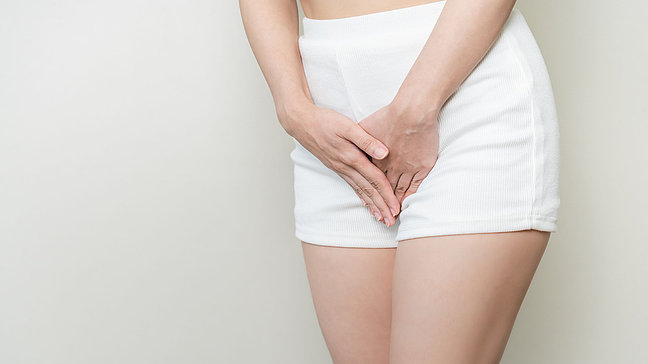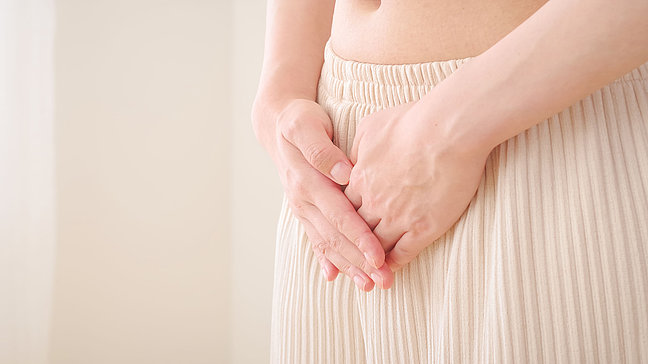
Dripping or trickling
Causes of post-void dribbling
Post-void dribbling often occurs when urine remains in the back part of the urethra and is not completely expelled. The most common causes are:
- Weak pelvic floor muscles: A weakened pelvic floor musculature can disrupt normal urine flow and hinder the complete emptying of the urethra.
- Enlarged prostate: In men, an enlarged prostate can obstruct urine flow, leading to residual urine in the urethra that later exits.
- Urethral stricture: A narrowing of the urethra can prevent urine from flowing out completely, leading to post-void dribbling.
- Overactive bladder or bladder weakness: Overactivity or weakness of the bladder can cause the bladder muscle to not fully control the urine, leading to urine loss after urination.
Symptoms of post-nasal drip
- Uncontrolled leakage of small amounts of urine shortly after urination
- Feeling that the bladder is not completely emptied
- Moisture or stains on underwear after using the toilet
- More frequent urge to urinate or the feeling of needing to go to the toilet more often
Diagnosis of Post-Void Dribbling
The diagnosis begins with a detailed medical history and physical examination. Various diagnostic procedures can be used to determine the underlying cause. A urinalysis helps to rule out infections or abnormalities. An ultrasound can be used to determine if there is residual urine in the bladder after urination. Urodynamic tests measure bladder function and urine flow to detect possible bladder dysfunction. In some cases, a cystoscopy, an endoscopic examination of the urethra and bladder, may be performed to identify structural problems such as strictures or prostate enlargement.
Treatment options for post-void dribbling
The treatment of post-void dribbling depends on the underlying cause:
- Pelvic floor training (Kegel exercises): Regular training of the pelvic floor muscles can improve control over urine flow and reduce post-void dribbling.
- Double voiding: With this technique, after the first urination, wait a few seconds and then try to urinate again to ensure the bladder is completely emptied.
- Medications: For an enlarged prostate, medications such as alpha-blockers or 5-alpha-reductase inhibitors can help improve urine flow.
- Surgical interventions: In more severe cases, such as urethral stricture or prostate enlargement, surgery may be necessary to remove the blockage.
Preventive measures for post-void dribbling
Regular pelvic floor exercises can help improve bladder and urethral function and reduce the risk of dribbling. Adequate fluid intake and regular urination can also help ensure the bladder is completely emptied. Men should have regular prostate screenings to detect problems early.
Common Patient Questions About Dribbling
Dribbling can be caused by various factors, including incomplete bladder emptying, weak pelvic floor muscles, or an enlarged prostate that impairs urine flow.
The treatment depends on the cause and may include pelvic floor exercises, medication therapy, or in some cases, surgical intervention.
Not necessarily. It is often due to benign causes such as an enlarged prostate. Nevertheless, a doctor should be consulted to rule out serious conditions.
Yes, targeted pelvic floor training can strengthen the muscles and help reduce dribbling.
Yes, it is advisable to consult a urologist to determine the exact cause and discuss appropriate treatment options.
![[Translate to English:]](/fileadmin/_processed_/1/d/csm_UZ-Logo-2024-breit-aK-1500px-white-red_4b49b8d28c.png)


